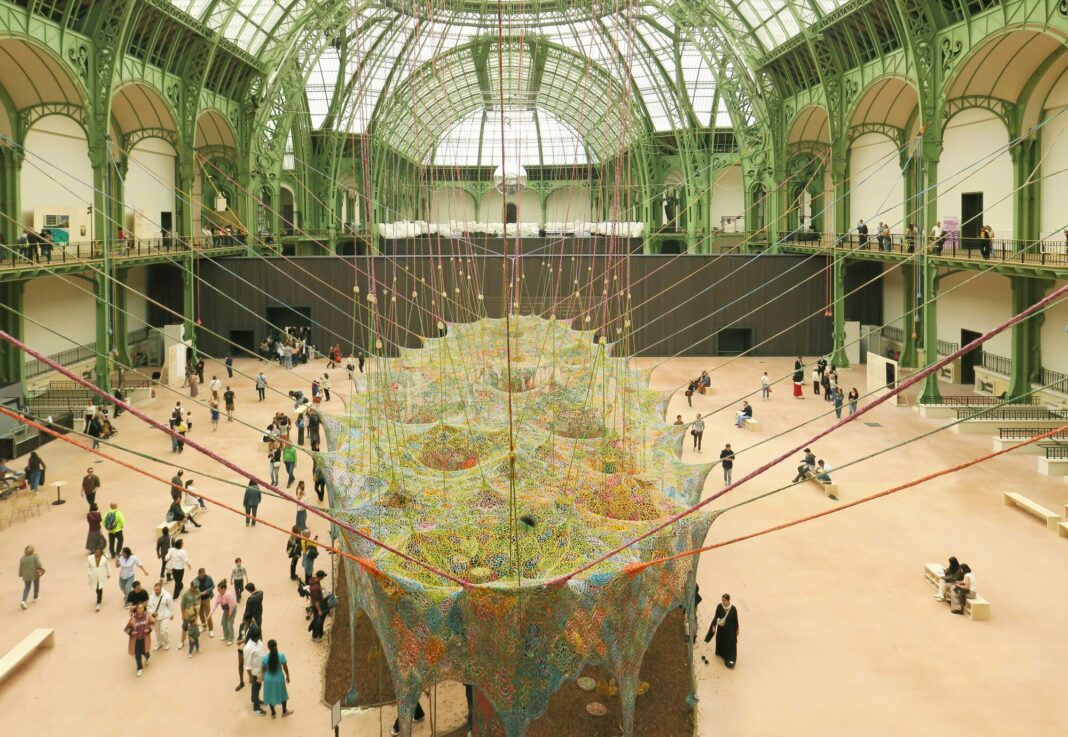The exhibition “Nosso Barco Tambor Terra” by Brazilian artist Ernesto Neto, held at the recently renovated Grand Palais in Paris from June 6 to July 25, 2025, is a large-scale, immersive installation that invites visitors to reconnect with nature and community through sensory experience. Drawing inspiration from Brazilian and Indigenous cultures, Neto uses textiles, scents, and organic materials to create a space for reflection and interaction. The textile installation was recently captured by photographer Paul Clemence, who sought to portray its architectural qualities.
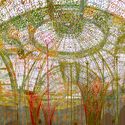
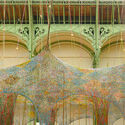
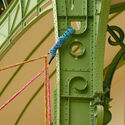
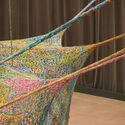
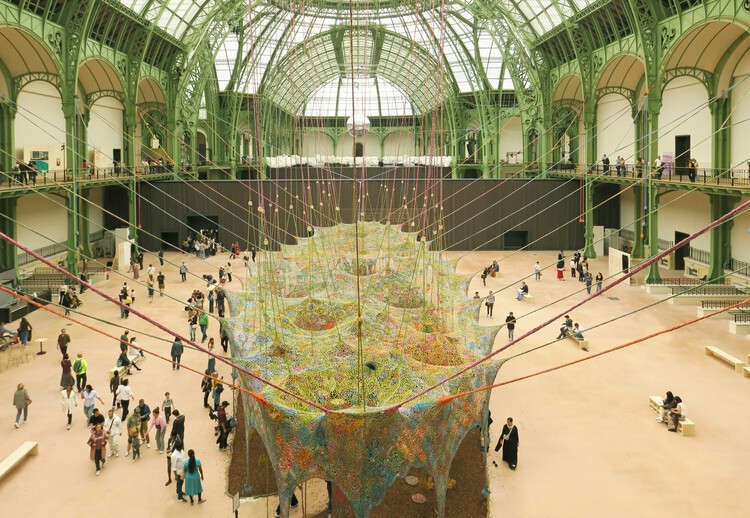
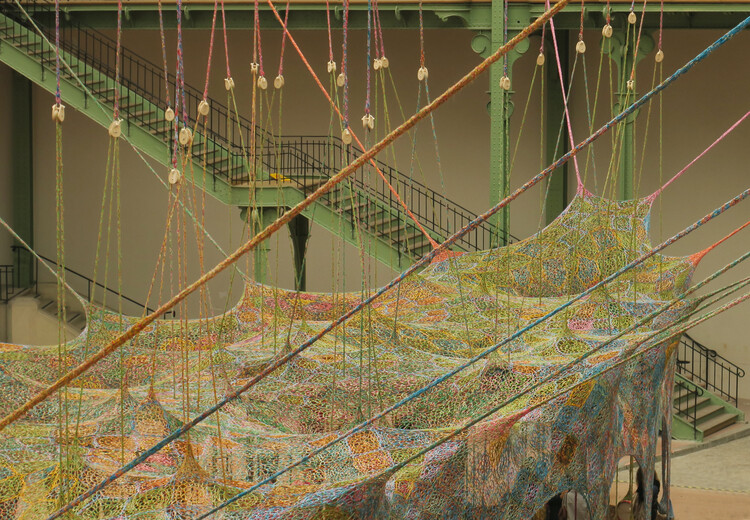
Crafted from crochet, bark, chintz cotton fabric, seeds, earth, and aromatic spices, the installation explores themes such as the relationship between body and earth, the rhythm of nature, and collective memory. Visitors are encouraged to walk barefoot, touch the work, and engage with it through all their senses. Neto’s artistic practice blends sculpture and ritual, inviting a spiritual dialogue through tactile environments.
According to photographer Paul Clemence, the image series aims to capture the installation’s layers and patterns in dialogue with the Grand Palais’ architecture: an invitation for architects to “connect more with the whimsical and poetics of art.” His photographs use Ernesto Neto’s handmade structures as what Clemence describes as an “impressionistic filter” through which to contemplate the historic building, filtering light and tinting it with color. From his perspective, the installation lends a dreamlike quality to a landmark steeped in history.
Related Article
I’m Still Here: How Rio de Janeiro’s Architecture and Urbanism Shape the Oscar-Nominated Brazilian Film

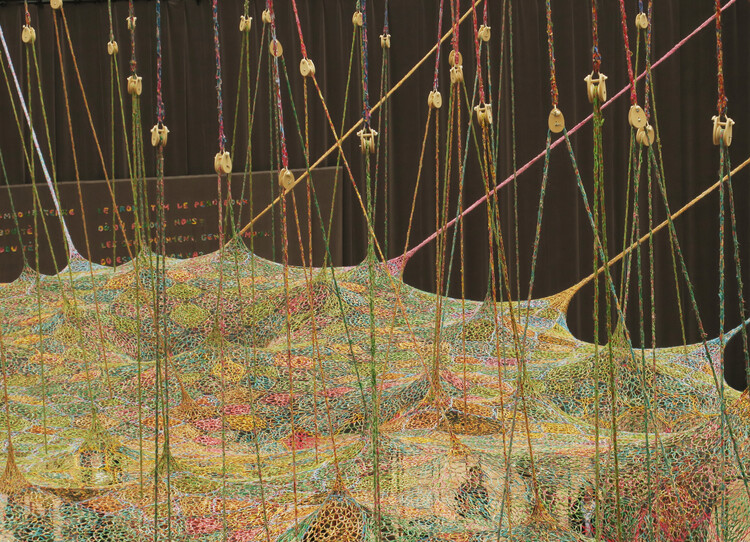
The space was conceived as a meeting point for art, activism, and communal exchange. Ernesto Neto’s work is known for its use of unconventional materials and techniques, as well as for its celebration of rhythm and collective experience as universal languages. Periodic activations, including concerts, percussion sessions, celebratory processions, workshops, discussions, and cultural events, are scheduled to accompany the exhibition, expanding on topics such as ecology, ancestral knowledge, and Brazilian heritage.
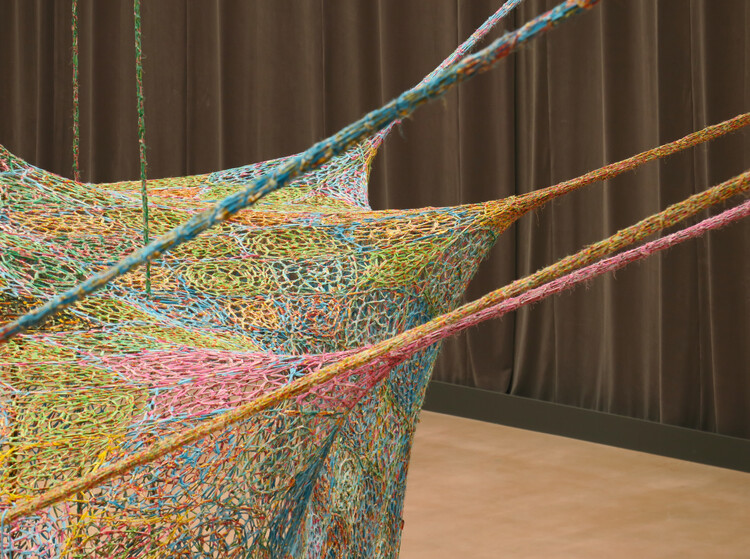
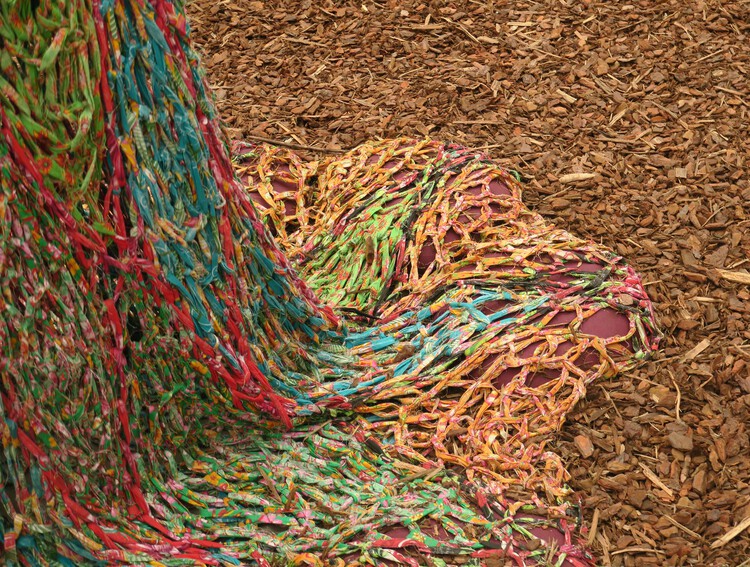
American-Brazilian photographer Paul Clemence has recently documented Ruy Ohtake’s Bioparque Pantanal in Brazil’s wetlands, the Academy Museum of Motion Pictures in Los Angeles designed and revitalized by Gensler and the Renzo Piano Building Workshop, and the new Clichy-Batignolles Eco-District in the 17th arrondissement of Paris, featuring contributions from internationally recognized architects including MAD Architects, Architectes Périphériques, and RPBW. Other recently opened exhibitions and installations include Peter Cook’s Play Pavilion adjacent to Serpentine South in London, Marina Tabassum’s 2025 Serpentine Pavilion, and the fourth edition of the ABERTO exhibition at Le Corbusier’s Maison La Roche, also in Paris.

